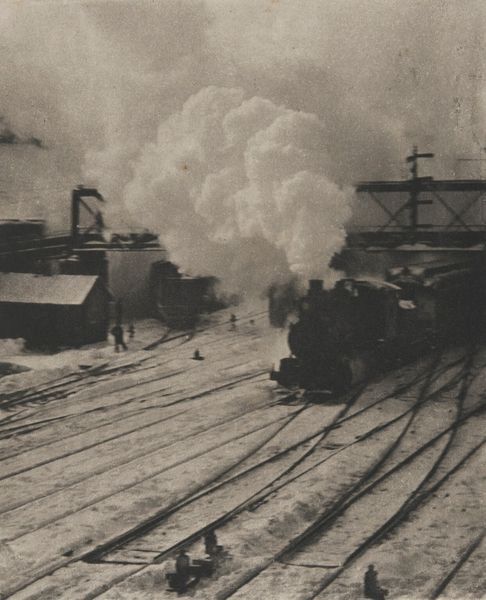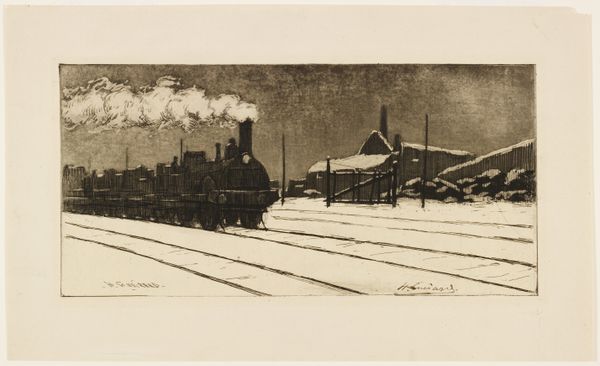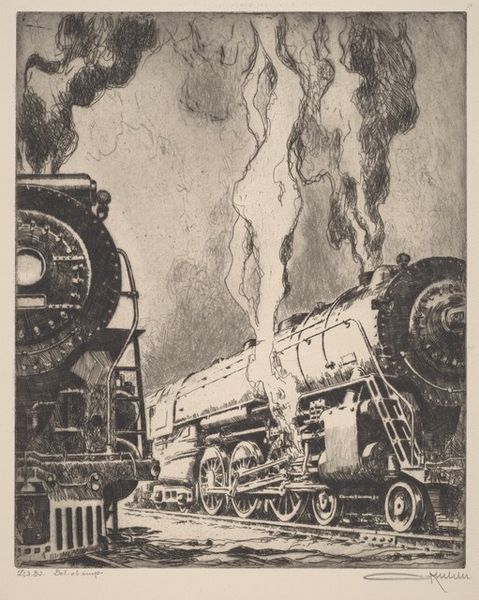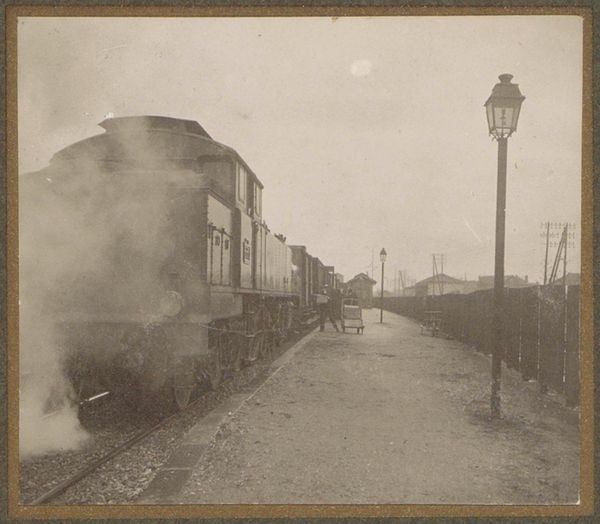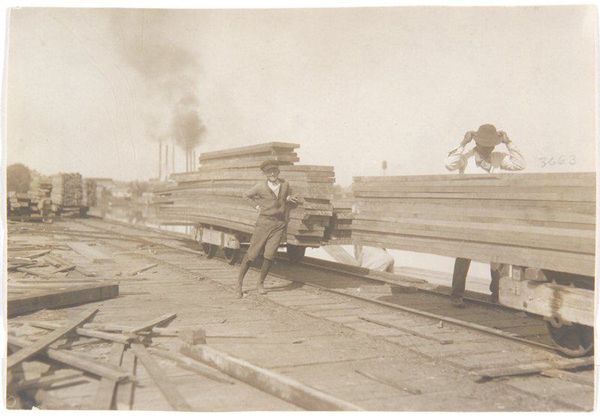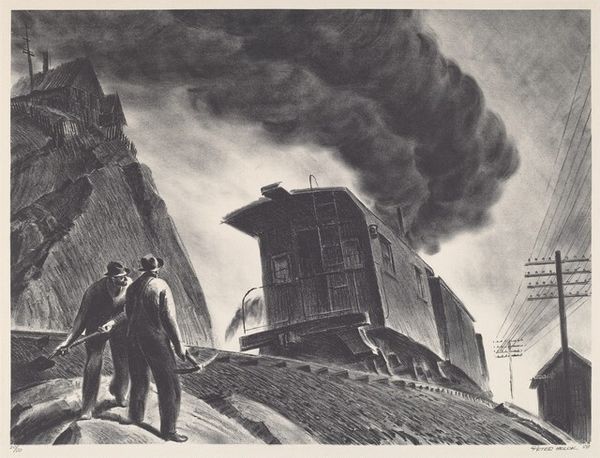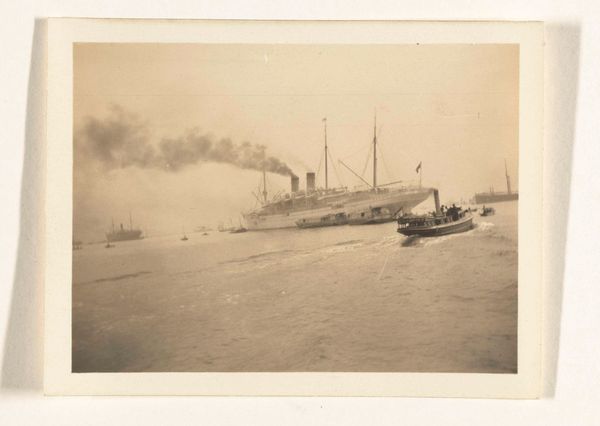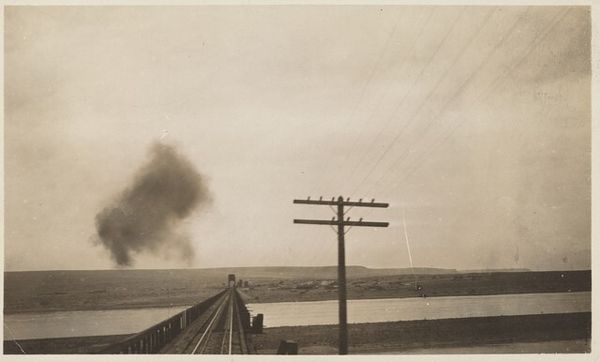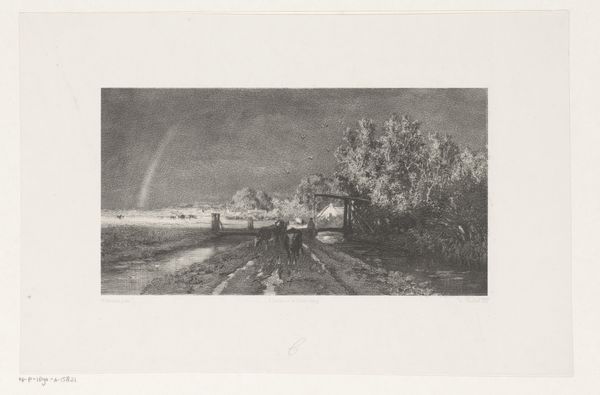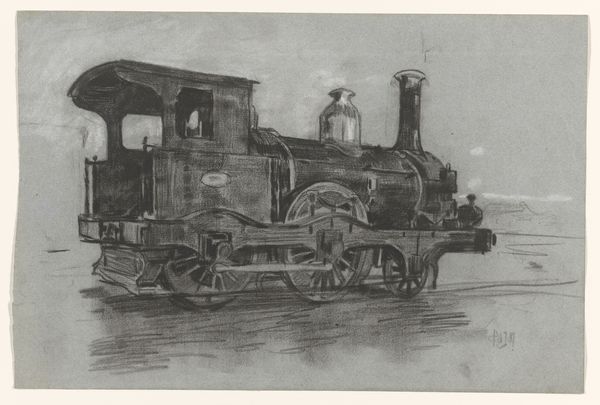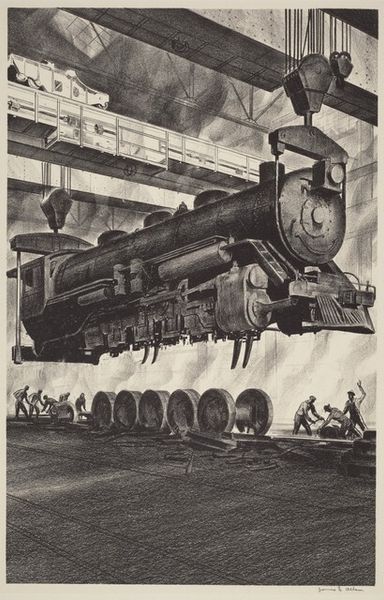
print, photography
#
pictorialism
# print
#
landscape
#
photography
#
cityscape
#
monochrome
Dimensions: 31.1 × 26.2 cm cm (image); 36.2 × 30 cm (paper/first mount); 51.6 × 44.5 cm (second mount)
Copyright: Public Domain
Editor: So, here we have Alfred Stieglitz's "The Railroad Yard, Winter," created in 1903. It's a photograph, so a print. It's such a striking image – a landscape that feels both harsh and strangely beautiful in its monochrome palette. What stands out to you when you look at this piece? Curator: The composition, first and foremost. Notice the strong diagonal lines created by the train tracks, converging towards the middle ground. This directs our gaze and creates a sense of depth. The plume of smoke acts as a counterpoint, a vertical element that disrupts the linear rigidity. How do you see these structural contrasts interacting? Editor: That’s a great point! I see how the tracks create a sense of movement drawing my eyes towards the center of the picture and contrasting with that huge cloud of smoke. Are there other such intentional design choices? Curator: Certainly. Consider the tonal range – the subtle gradations from the dark, almost black locomotive to the soft, ethereal grays of the smoke and sky. Stieglitz manipulates the photographic process to achieve a painterly effect, blurring the line between photography and fine art. Observe, too, the placement of the figures. What purpose do they serve within the visual framework? Editor: They almost seem to punctuate the snow with dark dots, scattered at intervals that create an atmospheric distance. Is Stieglitz emphasizing industrial advancement or desolation here? Curator: One could argue both are present. But focus on how those thematic interpretations arise from the visual language he employs – the lines, the tones, the arrangement of elements. Do those visual forms represent, or convey, or perform meaning and tone? Editor: I see now; by carefully constructing each of the components and composing them intentionally in the image, we, the audience, may interpret its objective based on those designs and their structural relations. I'm going to start looking for form and intention in my daily photographs too. Curator: Precisely, look closely, ask what those formal qualities are doing within the pictorial space and you’re beginning to unravel an aesthetic strategy.
Comments
No comments
Be the first to comment and join the conversation on the ultimate creative platform.
